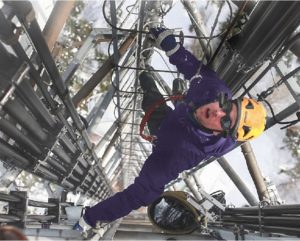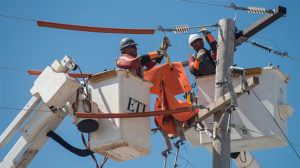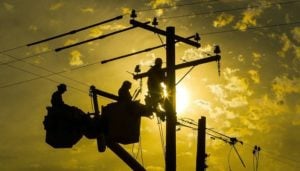Remote Solutions and Connected Worker Transforming Energy and Utilities
 In the utility and energy space, data delivers value and insight, but ultimately it’s making the right data available to the right person at the right time in a manner that is simple and cost-efficient, as well as intuitive. The use of augmented reality and virtual reality can minimize operational costs, improve safety, and expand the types of services provided in these industries.
In the utility and energy space, data delivers value and insight, but ultimately it’s making the right data available to the right person at the right time in a manner that is simple and cost-efficient, as well as intuitive. The use of augmented reality and virtual reality can minimize operational costs, improve safety, and expand the types of services provided in these industries.
What is augmented reality (AR)? It’s a technology that generates digital information, such as 3D models and videos, through smartphones, tablets, PCs, or wearable devices. AR is a real-time, direct, or indirect view of a physical, real-world environment whose elements are augmented or overlaid by computer-generated sensory input such as sound, video, graphics, or even other data.
It can speed up power restoration and help with the challenge of retraining the workforce by facilitating the preservation of real-world knowledge. Let’s look at specific ways it can benefit utilities.
Connected Worker offers Solutions to Decrease Work-Related Injuries
When workers are properly trained, they avoid risk. Recently, the level of safety has improved significantly in oil and gas, utilities, mining, and other energy-producing industries. Work-related injuries have decreased thanks to the growing health and safety awareness in the energy industry as a whole and the level of safety observations is growing rapidly to help employees avoid hazards which can cause a variety of injuries.
Connected Worker Improves Operational Costs
Besides reducing work-related injuries, Connected Worker can minimize overall operational costs through remote capabilities that could include the remote observation of trainees and much more.
For example, AR can be used in training employees, as well as assisting new workers. Diagrams of complex components that are 2D can be enriched with 3D to show detailed information. Employees can interact with the 3D models and create a better understanding of the equipment and their on-the-job demands. This allows the ability for more in-depth training and even faster retention of the information as it is hands-on. Employees can improve their proficiency faster than with conventional training methods. Also, it allows the ability to expedite equipment maintenance. With augmented reality, technicians in the field have immediate access to expert knowledge.
With Remote Observation Qualification (OQ) training, only qualified individuals can perform work on gas pipelines and they must go through a re-certification on critical tasks every three years. An evaluator must witness the individual performing the tasks for recertification. The bidirectional visual and audio enabled through Connected Worker allows this to be done remotely, which in turn reduces the company’s spend on travel, and avoids scheduling conflicts, allowing many individuals to be tested more frequently.

Another example is the ability to remotely observe trainees. With Distribution Linemen in utilities, for example, the instructor needs to either be in the lifted bucket with them, in an adjacent bucket, or watch from 40 feet below on the ground. None of these methods are ideal as they drive operational costs up and require additional equipment. Connected Worker technologies allow the instructor to observe everything remotely as if they’re seeing through the eyes of their trainee. The video recording & editing capabilities allow for each training exercise to be captured and redistributed to larger teams, enabling more efficient, faster training.
Digital Workflows and Procedures Speed Up Productivity
Connected Worker also incorporates digital workflows, allowing step by step digital procedures or inspections with the ability to document and verify completed work. Wearable devices enable voice-to-text functionality for entering information handsfree into software like Excel, Adobe, and other word-based datasheets.
 Employees can access documentation for all the operation’s equipment on their wearables, tablets, or smartphones to check maintenance data, review videos of past procedures, and more. An example is the ability to push and pull documents like standard operating procedures, instructional guides, historical data readings, and trends, or practically any type of documentation an organization might have to assist their workers in the field.
Employees can access documentation for all the operation’s equipment on their wearables, tablets, or smartphones to check maintenance data, review videos of past procedures, and more. An example is the ability to push and pull documents like standard operating procedures, instructional guides, historical data readings, and trends, or practically any type of documentation an organization might have to assist their workers in the field.
Technicians can combine these workflows with 3D overlays to model a piece of equipment before working on it. Real-time data can be displayed on sensored assets to analyze maintenance needs and compare asset performance over time. This is a key piece in moving from reactive maintenance to proactive maintenance, making repairs and upgrades more efficient and timely than they’ve ever been. Also, the AR or connected documentation can provide information showing the asset type, product number, manual, and so forth to streamline ordering replacement parts and making the job of the technician that much more fluent.
Other Uses for Connected Worker in Utilities
Live video streaming and conferencing technologies allow teams to share their work remotely, including live video sessions where multiple team members can watch while a worker demonstrates a procedure or receives advice on complicated repair. These bi-directional audio/visual sessions are seamless for the field worker as they can utilize head-mounted wearables to share and interact with their team handsfree. They can be utilized to and from anywhere in the world with either cellular or internet connectivity.

These remote expert/remote mentor capabilities reduce the need for in-person, onsite assistance, and allow more accurate feedback, faster incident resolution times, and lower operational costs. Unlike virtual reality headsets, augmented reality wearables like RealWear’s HMT-1 do not block the view of the real-world environment. The heads up display appears to the wearer’s eye as a 7-inch tablet screen but in reality, is only an inch wide and unobtrusive. The screen is mounted on an adjustable boom arm so it can be swung out of the field of view at any time.
The software packages and specific use cases built around each utility’s needs determine the extent of use in the field. While VR devices render the virtual environment, AR/MR devices complement reality allowing the wearer to move, navigate, and perform work-related processes and tasks without any obstacles or safety concerns.
Internet of Energy
In the end, Industrial IoT for Utilities holds the key to the future of the industry. Customers expect their lights to stay on and their water to flow, and their furnace to kick in during a cold winter night and utilities have made a commitment to keep the energy moving forever. Connected Worker technologies allow them to do so by augmenting the capabilities of field reps, making maintenance procedures more efficient and predictable, and driving operational costs down.
Successful implementation requires utilities to establish a committee that allows the technology to develop and flourish at scale throughout their organization. Most organizations lack in-house AR/VR expertise; this is where a systems integrator comes in. For more information on how to get started or learn more, schedule a meeting with us today.
